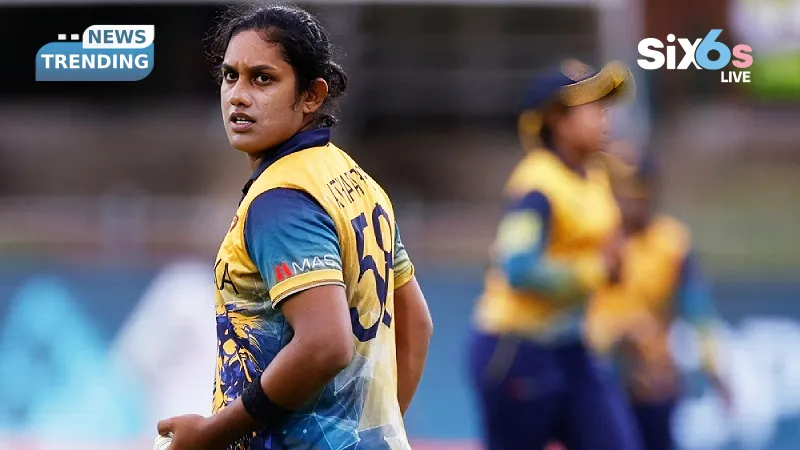Chamari Athapaththu possesses that unyielding captaincy mentality — the type of mentality that compels you to believe in the potential for massive shocks. With the 50-over World Cup being played in India and Sri Lanka, Athapaththu is unapologetically optimistic her players will be dangerous, rather than sentimental, given their familiarity with the conditions that the sub-continent can offer. That optimism and supporting quotes come from her latest interview with the ICC.
Why the sub-continent truly helps
Athapaththu’s principal aim is an uncomplicated one: the players of Sri Lanka, while not quite a home atmosphere, are used to the pitches, the weather, and most importantly, the crowds. Drawn-out pitches, slow pitch, and hot, humid afternoons benefit local knowledge. Sri Lanka will play five of their matches in Colombo at home, after starting their tournament against India on September 30th in Guwahati. The home matches provide them a rhythm, they can hone their strategy, and there is the audience energy derived from the fans filling the stadium that lifts fielding and confidence. These may be additional edges when analysed cumulatively over a tournament and morph a good team into a dangerous one.
Youth meets experience — a real shot at balance
Sri Lanka’s roster is not based on sentiment. It incorporates seasoned players like Athapaththu and Anushka Sanjeewani, mixed with dynamic youngsters like Vishmi Gunarathne and Harshitha Samarawickrama. This mixture provides the captain and coach with tactical versatility: using the young players to disrupt a game in the early portions and utilizing the experience to finish tense, close finishes. The islanders also have historical form — they came fifth at the 2013 Cup in India, which is their best finish – and they come into the 2025 driven after not playing in the previous edition held in New Zealand, so there is some motivation to prove something.
Where matches might be won (and lost)
From a tactical standpoint, Sri Lanka will be looking to put pressure on two aspects: controlling spin and defending the powerplay. If Athapaththu and the rest of the group can use spin to restrict partnerships, and their seamers take wickets early, they will be able to successfully defend small totals. Alternatively, any weakness in the first ten overs, a poor shot against seam, or sloppy fielding can quickly hand over the advantage against higher-ranked opposition. Such small margins – a drop catch, a misused review, or an extra over conceded – determine if a home advantage channels headline news or is soon forgotten. Fielding standards provide a true metric – saving nine runs, or taking one catch, can shift the momentum of the match. Watch the young brigade: if they bat with fearless intent for ten overs, they can completely change the game.
Athapaththu’s assurance isn’t just enthusiasm; it stems from circumstances, squad composition, and recent developments, which indicate that Sri Lanka is a real competitor and not just a bystander. The tournament will begin on September 30, and Sri Lanka will be hoping that home soil and good captaincy turn potential into performance; whether they end up being competitive or simply cause some memorable upsets, the team is sure to entertain and deliver some spicy drama. Will the island team surprise and give us a memorable underdog tale? I know I will be watching and hoping for the things that made this captain think they could achieve.
Stay updated on the latest cricket news and exciting updates at Six6slive. Dive into our in-depth articles and analyses to connect with the action today!
